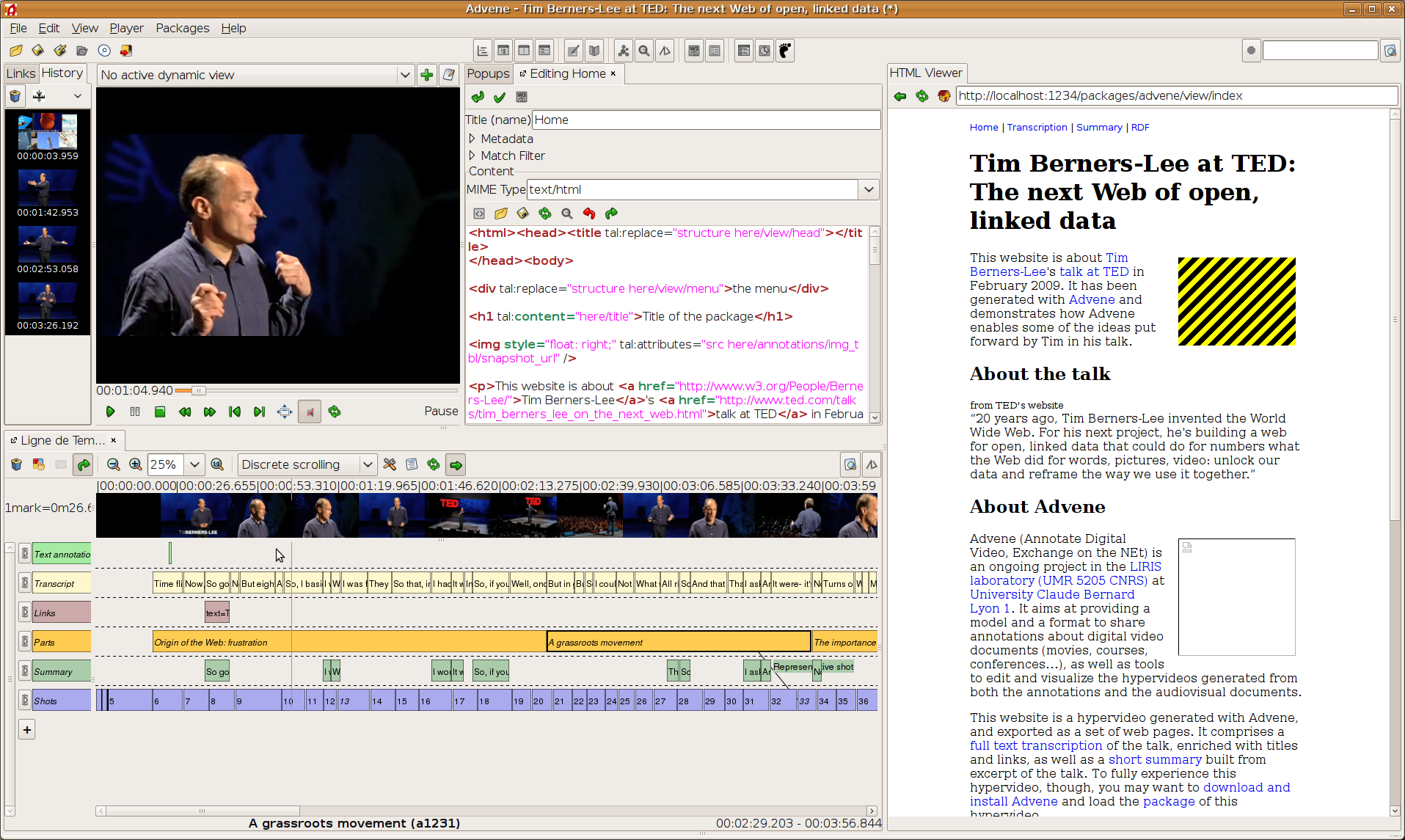
This website is about Tim Berners-Lee's talk at TED in February 2009. It has been generated with Advene and demonstrates how Advene enables some of the ideas put forward by Tim in his talk.
from TED's website
20 years ago, Tim Berners-Lee invented the World Wide Web. For his next project, he's building a web for open, linked data that could do for numbers what the Web did for words, pictures, video: unlock our data and reframe the way we use it together.

Advene (Annotate Digital Video, Exchange on the NEt) is an ongoing project which started in the LIRIS laboratory (UMR 5205 CNRS) at University Claude Bernard Lyon 1. It aims at providing a model and a format to share annotations about digital video documents (movies, courses, conferences...), as well as tools to edit and visualize the hypervideos generated from both the annotations and the audiovisual documents.
This website is a hypervideo generated with Advene, and exported as a set of web pages. It comprises a full text transcription of the talk, enriched with titles and links, as well as a short summary built from excerpt of the talk. To fully experience this hypervideo, though, you may want to download and install Advene and load the package of this hypervideo.
Other hypervideos generated with Advene can be found in the examples section of the Advene website.

From the beginning, one of the leading ideas of the Advene project was to exchange video annotation not only as hyper-documents (like the one you are reading right now), but also as raw data, so that other people could reuse, edit, and generate new hyper-documents with one's annotations.
Therefore, besides reading these pages, you can download the package here, and get the video from TED's website, and play with the annotations for yourself.

Advene is ready for Linked Data. First, every element in advene (annotation, relation, view...) is identified by a URI. Second, Advene's powerful template mechanism allows to export the data in many different formats, including RDF, as can been seen here.
Since the initial release of thie example package, normalization efforts, especially by the W3C working groups on Media Annotation and Media Fragments, have lead to the definition of the WebAnnotation standard, which Advene implements as a standard export filter, that can be invoked either from the GUI or the command-line, or simply accessing the /packages/advene/export/WebAnnotationExporter URL.